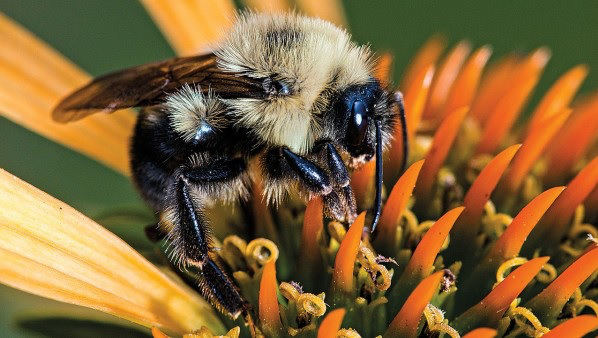-
Tips for becoming a good boxer - November 6, 2020
-
7 expert tips for making your hens night a memorable one - November 6, 2020
-
5 reasons to host your Christmas party on a cruise boat - November 6, 2020
-
What to do when you’re charged with a crime - November 6, 2020
-
Should you get one or multiple dogs? Here’s all you need to know - November 3, 2020
-
A Guide: How to Build Your Very Own Magic Mirror - February 14, 2019
-
Our Top Inspirational Baseball Stars - November 24, 2018
-
Five Tech Tools That Will Help You Turn Your Blog into a Business - November 24, 2018
-
How to Indulge on Vacation without Expanding Your Waist - November 9, 2018
-
5 Strategies for Businesses to Appeal to Today’s Increasingly Mobile-Crazed Customers - November 9, 2018
Bumblebees Unable to Adapt to Climate Change
Researchers compiled and mapped 110 years of bee distribution from hundreds of thousands of specimen records and found that bumblebee distribution patterns mirrored climate change trends. While the northern borders of each species’ territory remained about the same, the southern borders generally moved northward.
Advertisement
Jeremy Kerr, a biologist at the University of Ottawa, Canada, and colleagues report in the journal Science that they generated a database of 423,000 local observations of 36 European and 31 North American species of the genus Bombus and mapped the patterns of change.
“This all points to the fact that bumblebees are at risk, and the services that they provide are increasingly threatened by human-caused climate change”. “In this paper, we show that this mechanism may be operating across two continents to crush bumblebee species in a kind of climate vise”. Live Science reports that climate change is advancing at a high speed and bumblebees are not able to keep the pace for adapting to the growing changes and demands on their way of life. This is because while the bumblebees are dying off in the south, they don’t feel like going north. A speculated theory is that bumblebees are thrown into a biological limbo, a mishap of their own survival instinct brought up by a deep chemical imbalance due to warm weather. Bees are now a protected species with pest control units preferring to move rather than destroying bees which take up residence in people’s homes. Scientists have unequivocally linked increasing temperatures to the squeezing of the bumblebee habitat in a sort of “climate vice”.
While bumblebees don’t produce honey for human consumption, the decline in their numbers could seriously affect other foods we eat.
Shrinking geographic ranges could put major pressure on already vulnerable bee populations, driving them closer to the edge of endangerment or extinction. Many other insects, such as butterflies, are expanding their range into cooler regions. What is more surprising is that they do not seem to be expanding northwards. But bumblebees play a crucial role in various ecosystems, as agricultural crops and wildflowers depend on them for the complex task of pollination. More than land use or pesticides, they are getting affected by global warming.
“Museums hold the basic biological information that tells us about the history of our impact on the world”.
Advertisement
“In general, bumblebee species are not doing this”. And the shifting ranges could also be a problem for both wild plants and crops at the bees’ southernmost limits if the bumblebees aren’t around in the future to pollinate them, said Richardson.




























